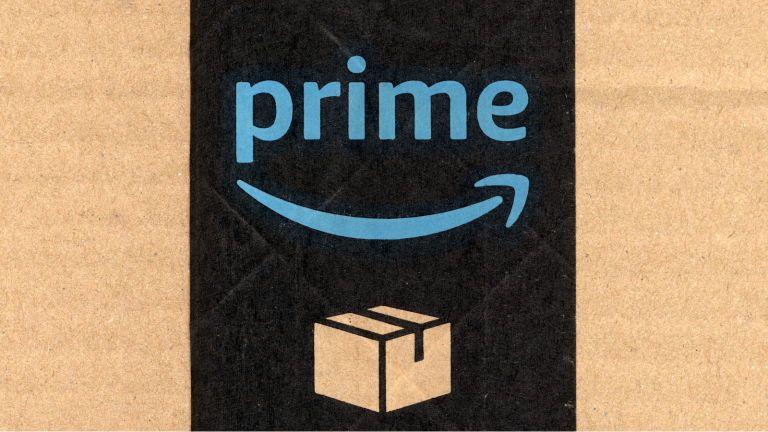Have you ever heard the expression “Christmas in July”? Well, back in 1933, a summer camp in North Carolina coined the term with two days of carolers, a Christmas tree, fake snow, and, of course, gift giving. The camp has continued doing it every July, as the phrase has evolved to mean any summertime event that evokes Christmastime.
Coincidentally, there is another two-day holiday (of sorts) happening this July: Amazon Prime Day.
Amazon (NASDAQ:AMZN) held its first Prime Day back in 2015 — and it was a huge success. In fact, more shoppers bought from Amazon on its inaugural Prime Day than they did on Black Friday the year before.
After the first Prime Day at Amazon in 2015 beat Black Friday, the sales extravaganza was expanded from a 24-hour to two-day event. And sales grew from $900,000 to $11.2 billion dollars over the last seven years. Prime shoppers have scored deals on arts and crafts, bedding, backpacks, laptops, baby care, beauty products, and wireless technology. Christmas in July, indeed!
Last year, Prime Day raked in about $3.5 billion in sales, according to analysts at Deutsche Bank. And typically, Prime Day has a positive influence on Amazon stock. For example, purchasing Amazon stock on the first day of Prime Day and then holding for a month yields a 6.62% return, as opposed to a 3.95% return on any other given month-long period throughout the year.
However, this summertime consumer-holiday doesn’t seem to be the extravaganza it once was. While the Prime Day holiday is still expected to bring in substantial sales, its sales growth slowed in 2021. According to Numerator, a company that tracks online purchases, the average order on Prime Day 2021 was $44.75, compared to $54.64 in 2020. This will also be the company’s first Prime Day without former CEO and founder Jeff Bezos at the helm.
This year, Brent Hill, an analyst for Jefferies Financial Group, said, “We estimate that Prime Day will contribute $8.1 billion in gross merchandising volume and $4.7 billion to net sales.”
But while Prime Day 2022 is expected to bring in sizable revenue, the stock has not fared well so far this year, having fallen more than 35% since January.
So, should you buy Amazon stock before Prime Day? According to my Portfolio Grader, the answer is loud and clear: No.
As you can see in the Report Card below, the stock was downgraded to a D-rating based on its poor earnings and fundamentals.

The fact is Amazon has struggled since shocking Wall Street with an incredibly disappointing first quarter for its fiscal year 2022. The company posted an earnings loss of 38 cents per share, well below analysts’ expectations for earnings of $0.42 per share — a 190.5% earnings miss. This was Amazon’s first net loss since 2015.
The second quarter isn’t looking too pretty for Amazon, either. Analysts expect earnings to fall 78% year-over-year to 17 cents per share, down from 76 cents per share a year ago. Revenue is estimated to increase just 3.8% year-over-year (YOY) to $119.55 billion, up from $115.2 billion a year ago.
I should also add that earnings estimates have been revised down 98% over the past three months, so an earnings miss is likely. This also spells bad news for the company.
These estimates come after Amazon reported its slowest quarterly revenue in 21 years in April. In an effort to recoup its losses, Amazon had upped its Prime membership from $119 a year to $139. Monthly-paying customers saw an increase from $12.99 to $14.99. These price hikes went into effect at the end of March.
But that’s not the only changes from the company this year: In fact, Amazon plans to hold a second Prime Day in the fourth quarter. This will be the first time the company has held two such events in one year, with the hope, of course, in drumming up additional sales — and possibly creating a Christmas in the Fall.
So, with Amazon stock severely underperforming, where should you invest?
Companies with scalability.
Scalability is the capacity of a business to massively grow revenues while minimally growing the costs associated with producing those revenues – and the most successful companies have harnessed the magic of scalability.
Amazon is actually a great example of a company that was hyperscalable. It was a transformational company that turned the retail industry on its head. Those who noticed Amazon’s ability to scale and invested would have walked away multi-bagger returns.
That’s exactly what legendary investor Whitney Tilson – dubbed by CNBC as “The Prophet” for correctly predicting many market moves – and I did. We understood the magic of hyperscalability and recommended Amazon stock while it was still a small company.
But now we’re seeing opportunities in companies that are essentially the next generation of Amazon-like scalability – in sectors that didn’t even exist 20 years ago.
We predict the nightmare of March 23, 2020, is about to repeat – but in a bizarre new way that could create a wave of millionaires on just a small investment, if you’re willing to take advantage of the panic this year.
The Editor hereby discloses that as of the date of this email, the Editor, directly or indirectly, owns the following securities that are the subject of the commentary, analysis, opinions, advice, or recommendations in, or which are otherwise mentioned in, the essay set forth below:
Amazon (AMZN)

